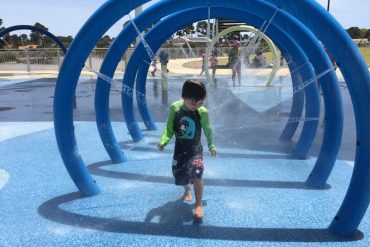All You Need To Know: A Comprehensive Guide for Parents about the Uluru Stone
Hello, lovely parents! We understand that keeping your child entertained and educated can sometimes be quite the task. That’s why we’re here to help! Let us embark on a fascinating journey to explore the grandeur and mystery of one of Australia’s greatest treasures: The Uluru Stone.
About the Majestic Uluru Stone
Towering high up in the heartland of the Australian outback stands the Uluru Stone, also known as Ayers Rock. It’s recognised not only for its grand size and striking red-ochre hue but also for the interesting geology, mythology, and cultural significance it holds.
Geographical Details
The Uluru Stone, being the largest monolith rock in the world, is nothing short of awe-inspiring. While your children might need a bit of help understanding what a ‘monolith’ is (simply a single, massive stone or rock), they will undoubtedly be captivated by the sheer size of this natural wonder!
Cultural Significance
Uluru holds great importance to the Aboriginal people of Australia, particularly the Anangu people who are the traditional custodians of this land. The rock formations and caves are adorned with ancient petroglyphs, offering a fascinating insight into Indigenous Australian culture and history which can be a great educational opportunity for your kids!
Exploring Uluru with Kids: Top Tips and Activities
Taking a family trip to Uluru can be a wonderfully enriching experience. However, it’s essential to plan ahead to make the most out of your visit. In the next section, we’ll be providing some helpful tips and activities that your kids will absolutely love!
Guided Tours
One of the best ways to explore and get a deeper understanding of the Uluru Stone is through guided tours. These tours are designed to offer visitors a thorough understanding of the geological and cultural aspects of Uluru in a kid-friendly manner.
Whether you’re planning a trip to the Uluru Stone, doing a school project, or just looking for a way to teach your child about diverse cultures and remarkable geographical wonders, we hope that our guide proves to be a helpful resource for you and your family as you explore the intriguing and inspiring world of the Uluru Stone. Stay tuned!

Visiting During Cooler Months
To ensure the best possible experience, visiting during cooler months (May to September) is recommended. This is key in avoiding the scorching temperatures of the Australian summer, especially for your little ones. The weather is usually much more pleasant and manageable, allowing for a more enjoyable outdoorsy adventure.
Don’t Miss the Sunrise and Sunset
No visit to Uluru would be complete without witnessing the magical transformations that occur during sunrise and sunset, when the Uluru Stone blushes from oranges to purples. Make a fun dawn picnic or late snack to make the experience more enjoyable for the kids!
Discover Flora and Fauna
Exploring the surroundings of Uluru offers unique opportunities to spot some Australian wildlife such as kangaroos, dingos and an eclectic variety of birds. Turn your visit into a mini safari for your kids and let their wonder bloom!
Respecting Aboriginal Cultural Heritage
Uluru isn’t just a stunning geographical icon; it’s also a sacred site to the Anangu. As you visit with your family, it’s an excellent opportunity to teach your children about respecting cultures and the importance of preserving ancestral lands. Remember setup the rule not to climb the Uluru stone as it infringes upon Indigenous laws and beliefs.
We hope this comprehensive guide helps your family plan an engaging, educational, and responsible visit to the magnificent Uluru Stone. Keep exploring, and cherish the smiles and the memories created on this exciting journey!
Five Vital Tips for Parents Preparing for the Uluru Stone Adventure
Visiting the mesmerizing Uluru Stone is an excellent way to spark children’s curiosity about the world’s natural wonders. Here are five important tips to help prepare for this unforgettable family adventure.
1. Understanding the Symbolism of Uluru Stone
Firstly, parents should educate their kids about the significance of Uluru Stone. It is an iconic landmark steeped in indigenous history, culture, and spirituality. Encouraging your child to appreciate its cultural importance enhances their visit.
2. Checking Climate Conditions
Australia’s temperature varies dramatically depending on the season, hence your preparation should include checking the weather forecast for Uluru. The area can be scorchingly hot during the summer, thus lighter clothing should be packed. Conversely, in the winter, temperatures plummet to very low levels at night, so pack in warm clothes too.
3. Preparing for Hiking
If your family is up for some adventure, then you will certainly explore the many hiking trails around Uluru. Ensure the kids have well-fitted hiking shoes to ensure comfort and reduce the chance of slips or falls.
4. Appropriate Etiquette
Educate your children about the indigenous culture and appropriate manners when visiting sacred places like Uluru. For example, it’s respectful not to climb the monolith or remove any rocks, and inform your kids about these rules.
5. Protecting Your Skin
One essential thing to prepare for the Uluru visit is to carry ample sun protection. Make sure to pack hats, sunglasses, and sunscreen for the kids to protect against the strong Australian sun.
Indeed, these strategies will ensure that you’re prepared for the beauty and challenges of Uluru, thus enhancing your family’s experience of this magnificent natural wonder.
For more great articles please see here. For more information see here
Disclaimer
The articles available via our website provide general information only and we strongly urge readers to exercise caution and conduct their own thorough research and fact-checking. The information presented should not be taken as absolute truth, and, to the maximum extent permitted by law, we will not be held liable for any inaccuracies or errors in the content. It is essential for individuals to independently verify and validate the information before making any decisions or taking any actions based on the articles.




